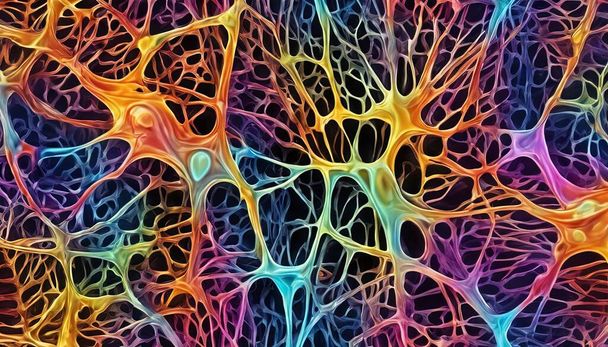Written by Esther Swamidason
Last year, I faced significant challenges maintaining a consistent exercise routine. I started January with enthusiasm and saw some success in losing weight but struggled to keep up after a month or two. Sadly, I ended 2024 heavier than I was in 2023. When I looked back and evaluated what went wrong, there were many circumstantial changes that altered my routine. I underwent mentally and socially challenging situations that did not let me prioritise my weight loss despite it being one of my major goals for 2024!
As a scientist, I decided to take a scientific approach to tackling my laziness, procrastination, negligence and whatever other factor that played a part in me losing consistency in my daily decision making. With the many articles I read on neuroscience and habit formation, I have drafted a science-backed guide for you to join my journey in developing and sustaining productive habits.
Step 1: Understand the Habit Loop
According to Charles Duhigg’s “habit loop” framework, habits consist of three components: cue, routine, and reward 1. Neuroscience research supports this model, emphasizing the role of the basal ganglia in habit formation2 (Smith & Graybiel, 2016). The basal ganglia help encode routines and automate behaviours over time. The hormone most commonly associated with activating the basal ganglia is dopamine, a neurotransmitter rather than a traditional hormone. It plays a critical role in the basal ganglia’s function, particularly in the regulation of motor control, reward and habit formation.
Dopamine facilitates the direct pathway (which promotes movement) and inhibits the indirect pathway (which suppresses movement) within the basal ganglia circuits3. This balance is essential for smooth motor control. In the context of habit formation, dopamine acts as a reinforcer by signalling reward and helping to encode routines into long-term memory4. In cases of addiction, Dopamine dysregulation in the basal ganglia can reinforce maladaptive habits or behaviours5.
We could hijack the habit loop by identifying a consistent cue and meaningful reward that releases dopamine to reinforce the desired habit. For example, I tried placing my dumbbells on my coffee table so that I would ensure I only have my favourite, can’t-live-without iced tea only after I work out.
Step 2: Start Small to Activate Neuroplasticity
Neuroplasticity is the brain’s ability to rewire itself is crucial for habit formation6. The two neurotransmitters involved in neuroplasticity are Glutamate and Acetylcholine. While Glutamate facilitates synaptic plasticity by promoting the strengthening and weakening of synaptic connections, enabling learning and adaptation 7, Acetylcholine enhances attention and focus, aiding in the consolidation of new habits and learning tasks 8.
Research shows that micro-habits help lower the threshold for behavioural activation, making it easier for the brain to adapt and automate the behaviour 9. Starting with small, manageable changes minimizes resistance and promotes success. For instance, committing to just 5 minutes of exercise daily can pave the way for longer sessions. Break down your goals into micro-habits. If you aim to exercise, start with a single push-up or a short walk.
Step 3: Embrace Consistency Over Perfection
The prefrontal cortex (PFC) is responsible for decision-making and self-control During the initial stages of habit formation, the PFC plays a dominant role by helping you focus on the new behaviour and resist distractions. However, repeated behaviours eventually shift to the basal ganglia, a group of subcortical structures involved in motor control and routine requiring less conscious effort 10.
This transition reduces the cognitive load required to perform the habit, allowing it to become automatic and freeing up the PFC for other tasks. Dopamine released in the basal ganglia acts as a reinforcement signal, strengthening the neural pathways associated with the habit 11. Therefore, focus on consistency rather than intensity. A 5-minute daily workout is more effective for habit formation than a sporadic 1-hour session.
Step 4: Use Habit Stacking for Integration
Habit stacking involves linking a new habit to an existing one, leveraging the neural pathways already established. This technique is rooted in the principles of associative learning, where existing behaviours serve as cues for the new habit12. For example, if you already brush your teeth every morning, you can link this routine to a new habit, such as doing 10 squats right afterward.
Neuroscientifically, habit stacking works by engaging the brain’s associative networks, particularly in the basal ganglia, which encode sequences of actions. The existing habit acts as a stable cue, reducing the cognitive effort required to initiate the new behaviour. It simplifies habit formation by associating the new behaviour with an existing routine 13.
Step 6: Incorporate Accountability and Social Support
The final step is the reason why I thought of sharing this write-up in the first place! Social reinforcement activates the brain’s reward systems, encouraging habit adherence. A study by Christakis and Fowler (2007), demonstrated that social networks significantly influence behaviors such as exercise and weight loss. Their analysis of 12,067 participants over 32 years revealed that individuals were 57% more likely to become obese if they had a friend who became obese 14. To add, social validation that includes providing feedback and encouragement activates the mesolimbic dopamine pathway, which includes the ventral tegmental area (VTA) and the nucleus accumbens 15.
Also, oxytocin, often called the “bonding hormone,” plays a crucial role in strengthening social connections. Positive interactions within a supportive network increase oxytocin levels, promoting trust and cooperation. This hormonal boost enhances the perceived reward of engaging in socially reinforced habits 16. Apart from the role of dopamine and oxytocin, mirror neurons in the brain allow individuals to observe and emulate behaviours within their social group. Seeing others succeed in exercise routines or weight loss efforts activates these neurons, encouraging similar behaviour and facilitating habit formation through limitation 17.
Well, six steps isn’t too hard to keep in mind is it? Let’s apply these neuroscience-backed principles, to change the course of our 2025 and conquer it. As you embark on your New Year’s resolutions, remember to start small, celebrate progress, and remain consistent. The science of habit formation is on your side, enabling you to achieve lasting change. Also, be forgiving if you miss a day or two. We all fall sometimes, but it is important to dust yourself back up each time.
References
- Sims, Mary (2018) “Habit Formation and Deconstruciton: A Study in Behavioral Psychology,” Emerging Writers: Vol. 1 , Article 13. Available at: https://digitalcommons.kennesaw.edu/emergingwriters/vol1/iss2018/13
- Smith, K. S., & Graybiel, A. M. (2016). Habit formation and the striatum. Current Opinion in Neurobiology, 40, 1-8. https://doi.org/10.1016/j.conb.2016.05.002
- Gerfen, C. R., & Surmeier, D. J. (2011). Modulation of striatal projection systems by dopamine. Annual Review of Neuroscience, 34, 441-466.
DOI: 10.1146/annurev-neuro-061010-113641 - Graybiel, A. M. (2008). Habits, rituals, and the evaluative brain. Annual Review of Neuroscience, 31, 359-387. DOI: 10.1146/annurev.neuro.29.051605.112851
- Juárez Olguín H, Calderón Guzmán D, Hernández García E, Barragán Mejía G. The Role of Dopamine and Its Dysfunction as a Consequence of Oxidative Stress. Oxid Med Cell Longev. 2016;2016:9730467. doi: 10.1155/2016/9730467. Epub 2015 Dec 6. PMID: 26770661; PMCID: PMC4684895.
- Draganski, B., Gaser, C., Busch, V., Schuierer, G., Bogdahn, U., & May, A. (2004). Neuroplasticity: Changes in grey matter induced by training. Nature, 427(6972), 311-312. https://doi.org/10.1038/427311a
- Shen, W., Flajolet, M., Greengard, P., & Surmeier, D. J. (2008). Dichotomous dopaminergic control of striatal synaptic plasticity. Science, 321(5890), 848-851. https://doi.org/10.1126/science.1160575
- Hasselmo, M. E. (2006). The role of acetylcholine in learning and memory. Current Opinion in Neurobiology, 16(6), 710-715. https://doi.org/10.1016/j.conb.2006.09.002
- Fogg, B. J. (2009). A behavior model for persuasive design. Proceedings of the 4th International Conference on Persuasive Technology. https://doi.org/10.1145/1541948.1541999
- Yin, H. H., & Knowlton, B. J. (2006). The role of the basal ganglia in habit formation. Nature Reviews Neuroscience, 7(6), 464-476. https://doi.org/10.1038/nrn1919
- Maia TV, Frank MJ. From reinforcement learning models to psychiatric and neurological disorders. Nat Neurosci. 2011 Feb;14(2):154-62. doi: 10.1038/nn.2723. PMID: 21270784; PMCID: PMC4408000.
- Adams, J. (2000). Understanding habit formation in new behaviors: Neural correlates and strategies. Behavioral and Brain Sciences, 23(4), 441-467. https://doi.org/10.1017/S0140525X00003251
- Graybiel, A. M. (2008). Habits, rituals, and the evaluative brain. Annual Review of Neuroscience, 31, 359-387. https://doi.org/10.1146/annurev.neuro.29.051605.112851
- Christakis, N. A., & Fowler, J. H. (2007). The spread of obesity in a large social network over 32 years. The New England Journal of Medicine, 357(4), 370-379. https://doi.org/10.1056/NEJMsa066082
- Heinrichs, M., von Dawans, B., & Domes, G. (2009). Oxytocin, trust, and social behavior. Frontiers in Neuroendocrinology, 30(4), 548-557. https://doi.org/10.1016/j.yfrne.2009.05.005
- Rizzolatti, G., & Craighero, L. (2004). The mirror-neuron system. Annual Review of Neuroscience, 27(1), 169-192. https://doi.org/10.1146/annurev.neuro.27.070203.144230


